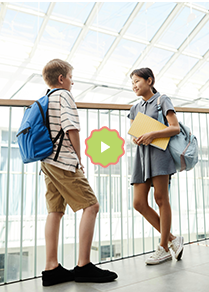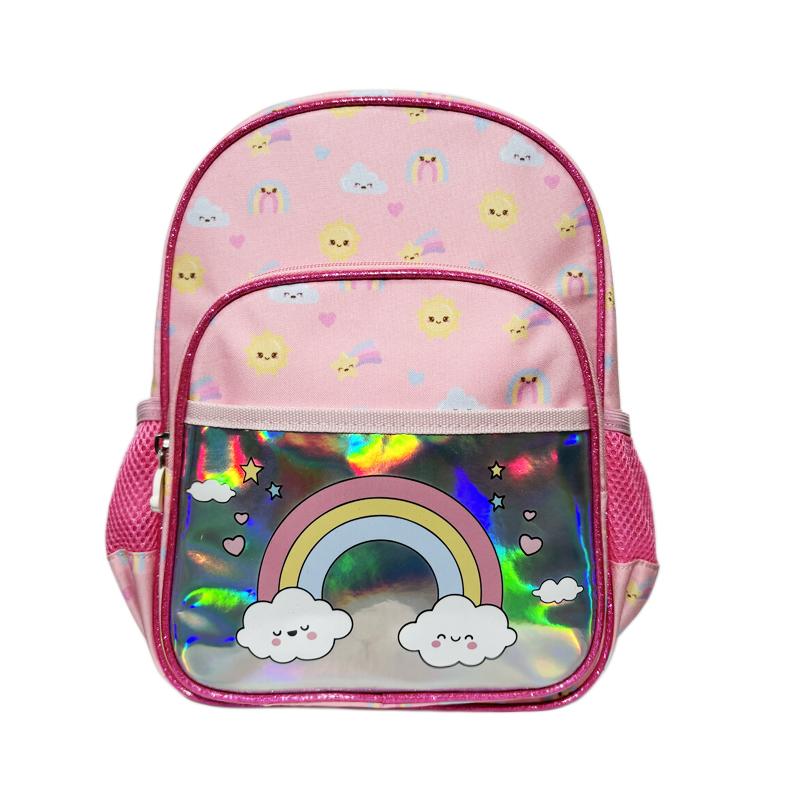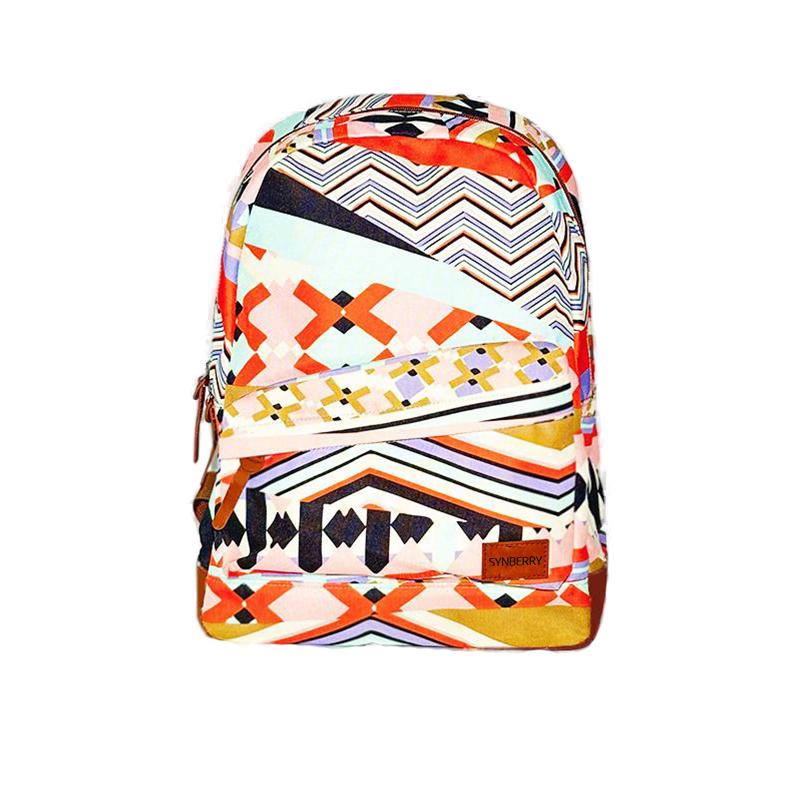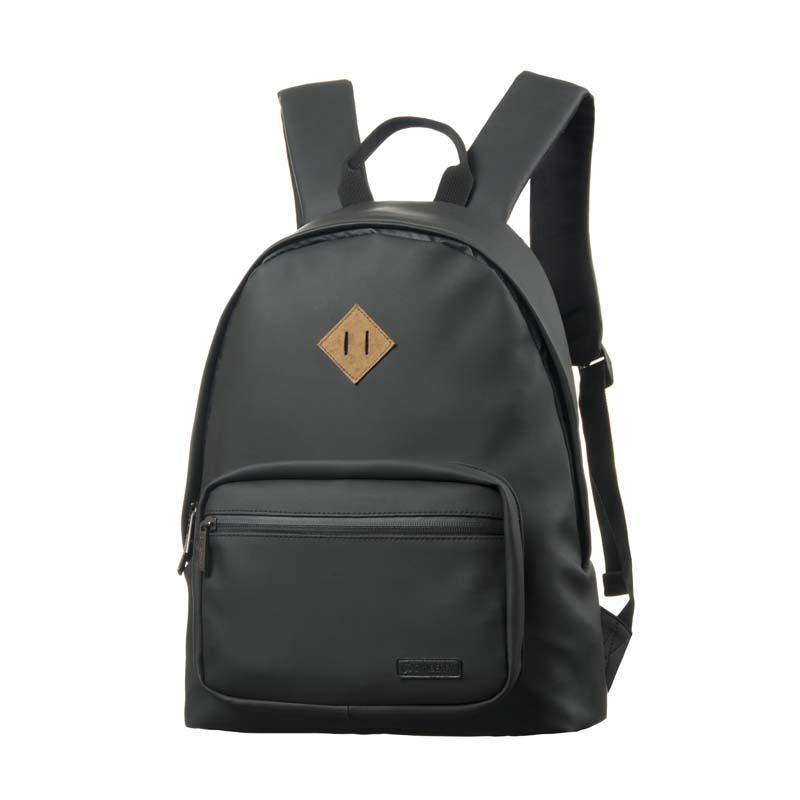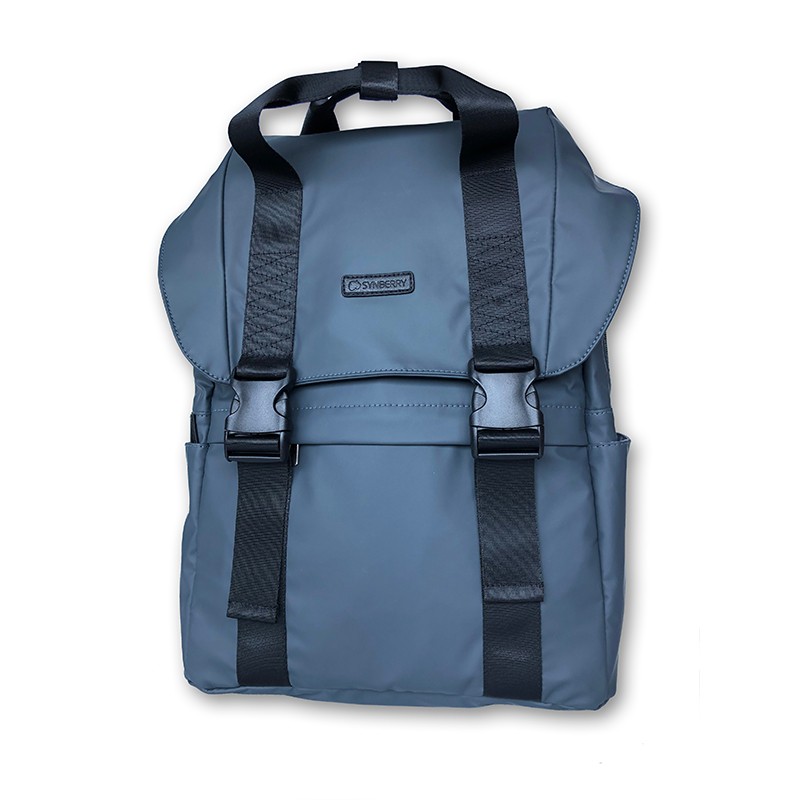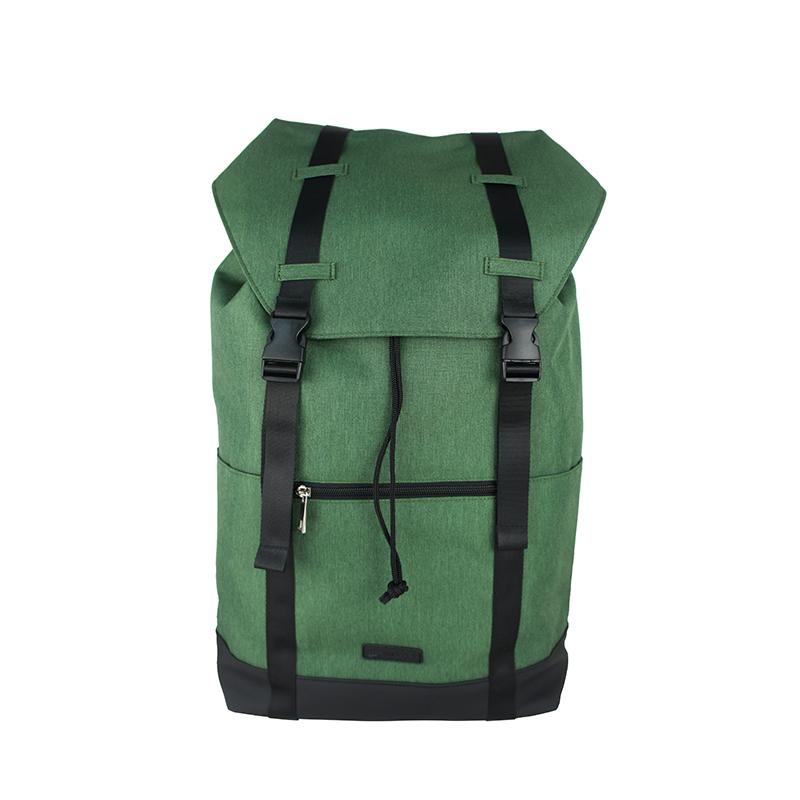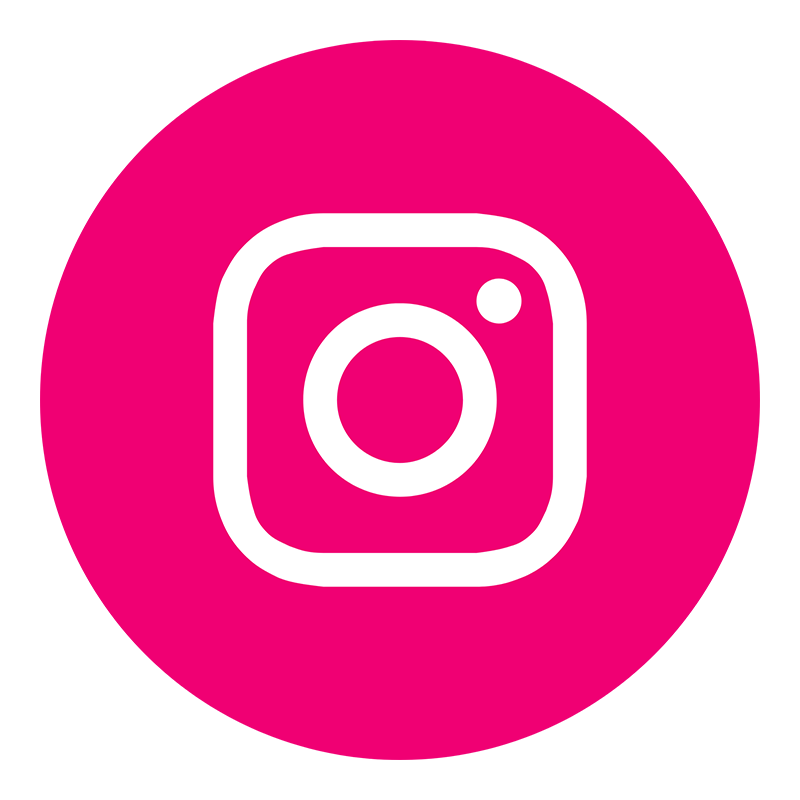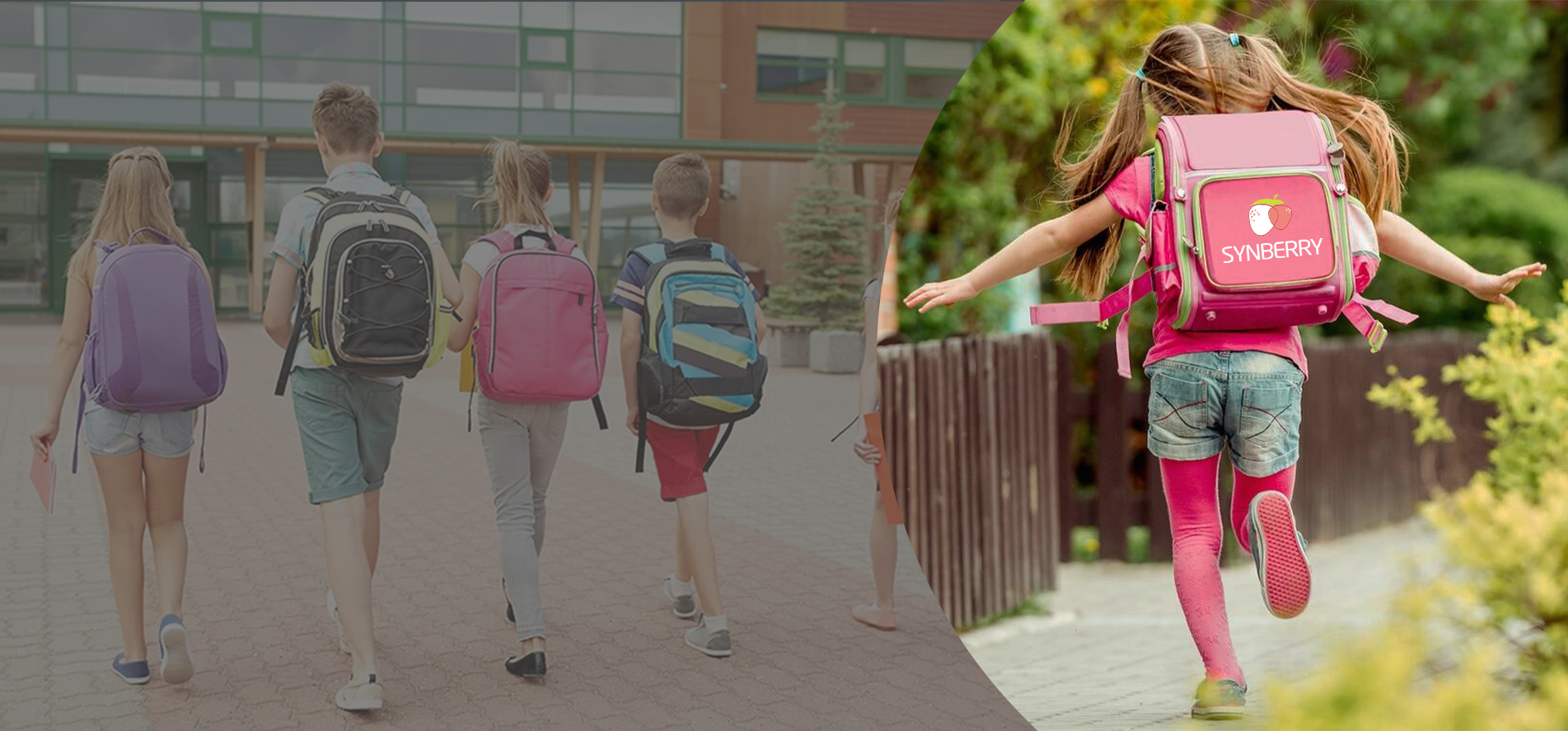
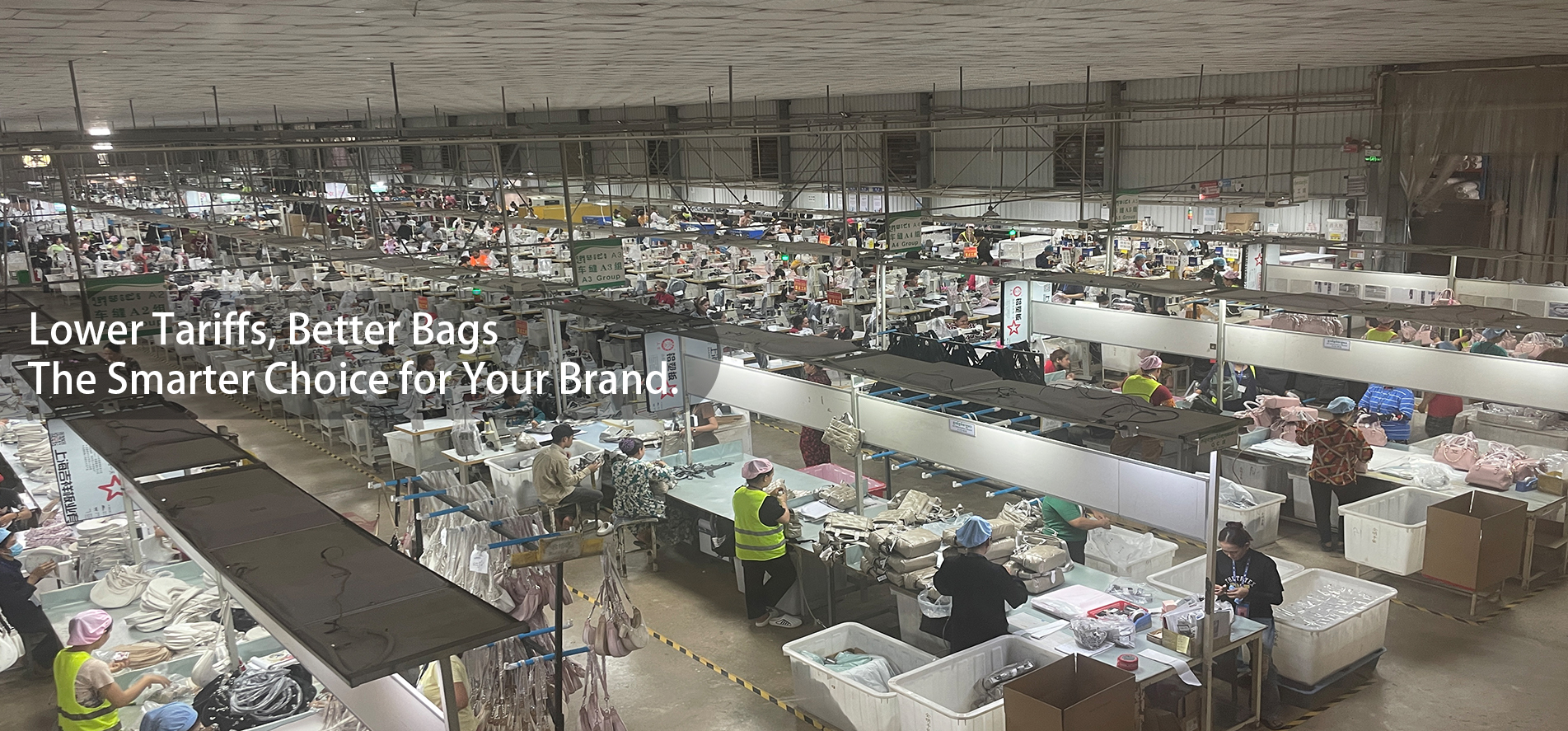
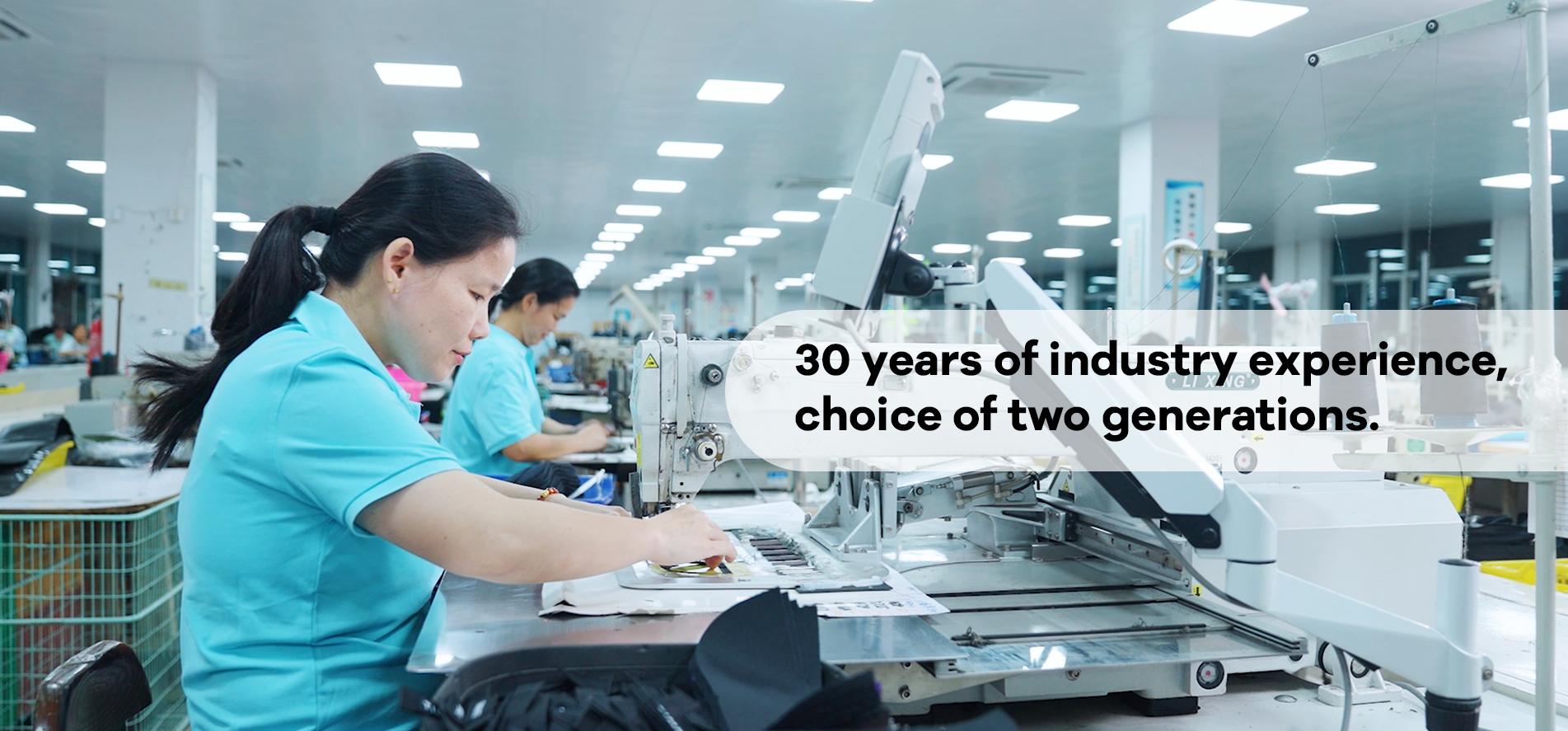
anos de experiência
Cooperação nacional
Equipe Técnica
Nosso serviço profissional de personalização de produtos transforma sua ideia em realidade, proporcionando uma experiência perfeita desde o conceito até a exibição do produto na prateleira do varejo.


Com fábricas na China e no Camboja, você tem flexibilidade para selecionar o local de produção que oferece os benefícios tarifários mais vantajosos com base na sua situação específica.


O que fez do Synberry a escolha de duas gerações? Com princípios de qualidade claramente definidos, documentação e registros bem gerenciados e, o mais importante, análise e inspeção aprofundadas do processo, somos capazes de garantir alta qualidade consistente.


Have you ever encountered these situations? Did you arrive at the classroom and find that you forgot to bring your geometry ruler? Did you struggle to find a pencil during class? If you are a student or your parent, these scenes may be closely related to you. So how to solve the above situations? A pencil case can solve the above problems. multifunctional pencil case;kokuyo multifunctional pencil case; If you're troubled by any of the above issues, then try the All-in-One School Supplies Pencil Case - a revolutionary all-in-one solution designed to revolutionize your learning experience. This is more than just a pencil case; it's your personal library of supplies, ensuring you're always prepared, productive and confident. With everything in one place, these pencil cases offer unparalleled convenience and peace of mind, making the school year go more smoothly for everyone involved in learning. What Makes multifunctional pencil case "Complete"? Many of you may be as unfamiliar with the concept of a multifunctional learning pencil case as I was, and when I first heard about a "complete" pencil case, I admit that I was skeptical. My experience with pencil cases was limited to a simple pouch that held a few pens and pencils. But a truly "complete" pencil case is much more than that. It's more than just a container; it's a carefully selected collection of essential tools that are thoughtfully assembled to meet the various needs of a student's daily life. In fact, multi-functional pencil cases are not high-tech things. Their core concept is very simple, that is, "one-stop service". This means no more scrambling to find individual items, no more last-minute runs to the store, and no more being caught off guard. Imagine no longer having to wonder "Did I bring my glue stick?" or "Where is my compass?" From basic writing tools to professional geometry tools, every item you may need is included, organized and easily accessible. This concept will bring game-changing changes to students of all ages - from elementary school students excited to start their first lessons to high school students who are busy tackling multiple advanced courses. Even parents like me feel extremely relieved to know that my children are fully equipped without endless shopping. Essential Features and Components: My Go-To Gear Many people may not understand why multifunctional pencil cases can solve these life problems and help you quickly find various stationery. Their core advantage lies in their rich selection and careful selection. When I look at my full set of pencil cases, I see not only a pile of disorganized items, but a toolkit carefully designed for various learning scenarios. What necessary stationery does a multifunctional pencil case contain: kuromi multifunctional pencil case;pop up multifunctional pencil case; A. Writing tools First and foremost, you will find a full-featured series of writing tools. Here, the basics are upgraded to a comprehensive level: Fountain pens: a lifesaver for taking notes and doing homework. There are three colors of pens in my pencil case: blue, black and red. Depending on the pencil case, they may be smooth ballpoint pens, bright gel pens, or precise rollerball pens. Different colors are very useful for organizing notes or marking texts. multifunctional big volume canvas pencil case;multifunctional pencil case uk;plastic pencil case multifunctional; Highlighters: a must-have for learning. There are multiple colors in my pencil case - usually yellow, pink, blue and green. This allows me to color-code information according to the topic, importance and even different subjects, which greatly improves the efficiency of review. Markers: For more creative tasks, or just making posters for group projects, I always have both fine tip markers and chisel tip markers in my pencil case. They’re great for emphasis or creating visuals without having to dig through an art box. Pencils: Not just one or two. I usually keep a few graphite pencils in my pencil case (usually an HB for everyday writing and a 2B for darker lines or shading). Of course, I also carry a mechanical pencil, which I love for its smooth lines and the fact that I don’t have to sharpen it as often. Yes, my refills are always in a little compartment! B. Drawing and Art Supplies: For Creativity and Clarity School isn't just about writing; it's about visualizing, diagramming, and expressing ideas. My complete pencil case ensures I'm ready for that too: Colored Pencils: A basic but versatile set of colored pencils is always there. These are fantastic for diagrams in science, maps in geography, or adding a touch of flair to presentations. Even if you're not an artist, they're incredibly useful for making information pop. Protractors: Essential for geometry, this often-forgotten tool is always present, allowing me to measure angles accurately. Erasers: Beyond the tiny pink eraser on top of a pencil, my case includes both a good quality pencil-top eraser (for quick fixes) and a larger, smudge-free block eraser. This means no more messy pages after corrections. D. Cutting and Adhesion: For Projects and Quick Fixes From cutting out project pieces to correcting mistakes, these items are crucial for everyday school tasks: Correction Tape/Fluid: We all make mistakes, and having correction tape or fluid means I can quickly and neatly fix errors without redoing an entire section. Glue Sticks: For quick paper projects or attaching notes, a glue stick is incredibly convenient and mess-free. Scissors: A small, safe, student-grade pair of scissors is invaluable. No more borrowing from classmates or struggling with dull, oversized ones. E. Organizational and Ancillary Items: The Unsung Heroes These are the smaller items that often get overlooked but make a huge difference in efficiency: Paper Clips/Binder Clips: Handy for keeping papers together, organizing handouts, or marking important pages in a textbook. USB Flash Drive (optional): Many modern cases recognize the digital age and include a small USB flash drive for saving and transporting digital files. This is a lifesaver for presentations or collaborative projects. Pencil Sharpener: My case includes a compact manual pencil sharpener, often with a built-in shaving catcher. Some even offer a small battery-operated one for effortless sharpening. Small Notepad/Sticky Notes: Perfect for jotting down quick reminders, questions for the teacher, or temporary notes. Mini Stapler with Staples (optional): For quickly binding a few pages together, a mini stapler is surprisingly useful. Whiteboard Marker and Eraser (optional): If you're in a class that uses small individual whiteboards, having your own marker and mini eraser is a definite plus. Design and Ergonomics: More Than Just a Pouch The contents are crucial, but how they’re housed is just as important. A complete pencil case isn’t just a random collection of items; it’s a well-engineered organizational system. A. Material Durability: My complete pencil case feels robust. It's often made from reinforced canvas, a semi-rigid hard shell, or other durable materials that can withstand the daily rigors of being tossed into a backpack. The zippers are strong and smooth, designed not to snag or break easily. This durability means it’s an investment that lasts, not something I’ll need to replace mid-year. B. Compartmentalization and Organization: This is where the magic truly happens. Instead of one big pouch where everything gets jumbled, my case has: Multiple Compartments and Pockets: These are strategically designed to separate different types of items. Pens go here, pencils there, geometry tools in their own section. This logical separation prevents damage and makes finding things instantaneous. Elastic Loops and Straps: Many items, like individual pens or rulers, are secured by elastic loops or straps. This means they don't roll around or fall out when I open the case, keeping everything neat and in place. Mesh Pockets: These are perfect for smaller, loose items like erasers, pencil lead, or paper clips, allowing me to see them at a glance. Clear Windows: Some cases even incorporate clear windows or panels, offering a quick visual inventory of contents without having to open every single pocket. C. Portability and Size: Despite holding so much, my complete pencil case is surprisingly compact. It's designed to fit easily into my backpack or locker without taking up excessive space. Many also come with a small handle or loop, making it easy to grab and carry to class, or even attach to a bag. D. Aesthetic Appeal: While functionality is key, it’s nice that these cases come in a variety of colors, patterns, and designs. I can choose one that reflects my personality, making it not just a tool, but also a small expression of self. Benefits of a Complete School Supply Pencil Case: Why I Love Mine Adopting a complete school supply pencil case has genuinely transformed my school routine. The benefits are far-reaching and impact every aspect of my academic life. Enhanced Organization: My backpack used to be a black hole of loose supplies. Now, everything has its designated spot within the case. This promotes tidiness not just in my pencil case, but in my overall study habits. It's a small victory that leads to bigger organizational improvements. Time-Saving: This is perhaps the biggest win. No more frantic searches, no more wasted minutes before class. I simply grab my case, and I know I have everything. This frees up valuable time for more important things, like reviewing notes or catching up with friends. Cost-Effectiveness: When you add up the cost of buying each of these items individually, often at different stores or at premium prices due to last-minute needs, a complete pencil case often proves to be more economical. It’s a one-time purchase that covers all your bases. Eco-Friendly Potential: While not the primary purpose, these cases can actually be more eco-friendly. By purchasing a curated set, you reduce the amount of single-use plastic packaging that often comes with individual items. Fosters Responsibility: Having all my supplies neatly organized in one place encourages me to keep track of them. It teaches a subtle but important lesson in personal responsibility and care for my tools. Reduced Stress for Parents and Students: For me, and for my parents, the stress of back-to-school preparation has significantly diminished. My parents don't have to endlessly check supply lists or make multiple trips. And I don't have the anxiety of forgetting something crucial. It’s a win-win. Who Needs a Complete School Supply Pencil Case? Probably You! College Students (adaptable versions): While often more specialized, college students can benefit too. There are versions tailored for specific majors (e.g., engineering students might need more advanced drawing tools) or general study, offering core essentials for lectures and assignments. High School Students: Juggling demanding schedules, multiple advanced classes, and often extracurriculars, high schoolers need efficiency. A complete case ensures they have every tool for every class without extra bulk or forgotten items. Middle School Students: This is when subjects start to diversify, and the need for different types of supplies grows. A complete case helps middle schoolers manage the increasing complexity of their academic needs. Elementary School Students: For younger students, these cases are fantastic for building foundational organizational habits. It makes it easier for them to keep track of their first set of "big kid" supplies. Parents: As a parent, if you're reading this, you know the struggle. These cases simplify back-to-school shopping immensely and offer peace of mind throughout the year. Although it may look simple, the multifunctional pencil case can solve many unnecessary worries in life. It is a practical tool that can simplify your school life and really improve your preparedness and confidence. From the moment you open it, you can see neatly stored pens, pencils, rulers and more, making you feel ready to face the challenges of school life. Author
VER MAISThis year's market is buzzing with exciting shifts and evolving consumer purchasing behaviors. We'll dive deep into the latest trends shaping this sector, highlighting which backpacks, pencil cases, and cosmetic bags are flying off the shelves and why they're resonating with today's consumers.Next, let me introduce the Bag Buyer’s Guide, I hope it will be helpful. Backpack Trends: Function, Sustainability, and Personalization In 2025, consumers demand more than just a way to carry their belongings. They want backpacks that seamlessly integrate into their lifestyles and reflect their values. 1.Versatility and Modular Design This is one of the most prominent trends right now. Consumers love backpacks that can adapt to different scenarios, like a single bag suitable for both daily commutes and weekend getaways. Customer Preferences: Shoppers are gravitating towards backpacks with expandable capacity and smart organization. For instance, a backpack that expands via zippers or roll-tops, or features removable components, offers crucial extra space when needed. This is incredibly convenient for consumers who might go from an office to a gym, or from a library to an outdoor activity. Additionally, designs with dedicated laptop sleeves, anti-theft pockets, and water bottle holders significantly enhance the user experience. Imagine a commuter who can securely stow their laptop, easily access their water bottle for lunch, and then effortlessly pack their gym clothes for after work. Market Shifts: Brands are responding by introducing more modular designs. Some backpacks feature detachable smaller pouches that can be used independently as fanny packs or cross-body bags, while internal dividers can be reconfigured to suit specific needs. This flexibility means one bag can serve multiple purposes, reducing the consumer's need to buy several specialized bags. The Peak Design Everyday Backpack is a prime example; its highly adjustable FlexFold dividers and versatile external attachment points allow photographers, commuters, and travelers alike to customize their space for various items. This "one-bag-fits-all" philosophy is definitely a hot pursuit in today's market. 2.Sustainable Materials and Eco-Consciousness Environmental responsibility has moved from a niche concern to a mainstream expectation. Customer Preferences: Consumers are increasingly willing to pay a premium for backpacks made from recycled materials or those with eco-friendly certifications. For example, backpacks crafted from recycled PET plastic not only reduce plastic waste but also send a positive environmental message to the consumer. Brands like Patagonia excel in this area, heavily utilizing recycled polyester and emphasizing product durability and repairability to extend product life and minimize waste. Consumers also prefer products that are durable and long-lasting, aligning with their desire to reduce resource consumption. A high-quality backpack that lasts for years is far more eco-friendly than frequently replacing cheaper alternatives. Market Shifts: Brands face growing pressure for transparency in their supply chains and demonstrate social responsibility. More and more brands are making sustainability a core selling point and actively showcasing their eco-friendly practices. Some, for instance, meticulously disclose their material sourcing, carbon footprint during production, and worker welfare initiatives. This transparency builds consumer trust and makes genuinely sustainable brands more competitive in the market. While not a new design, the Fjällräven Kånken, with its durable Vinylon F fabric and emphasis on reducing waste, has maintained immense popularity within the eco-conscious trend. 3.Tech Integration and Smart Features Smart devices are daily necessities, and backpacks are evolving to match. Customer Purchase Trends: There's high demand for backpacks with built-in USB charging ports and anti-theft designs. In an age where mobile devices are indispensable, a backpack's integrated charging capability (usually via an internal power bank connection) offers immense convenience. Imagine waiting at the airport, able to charge your phone without hunting for an outlet. Simultaneously, with heightened awareness of public safety, anti-theft backpacks featuring hidden zippers or RFID-blocking pockets (to protect credit card information from skimming) are becoming increasingly popular. Market Shifts: Some premium brands are exploring more advanced technologies. The Nomatic Travel Pack, for example, not only includes USB charging but also cleverly incorporates multiple anti-theft hidden pockets and easily accessible compartments. Even further, some brands are experimenting with integrating smart tracking features into backpacks. Through Bluetooth or GPS modules, consumers can track their bag's location via a mobile app—an undeniable benefit for frequent travelers or those prone to misplacing items. 4.Aesthetic Design and Personalization Consumers want their backpacks to be an extension of their personal style. Customer Preferences: While minimalist designs and neutral color palettes (like black, grey, khaki, and navy earth tones) remain popular for their versatility and timeless appeal, bold prints and patterns (especially geometric, abstract, or nature-inspired motifs) are also attracting consumers seeking uniqueness. Younger demographics, in particular, gravitate towards brightly colored or uniquely patterned backpacks to express their individuality. Market Shifts: Brands are offering more customization and personalization options to cater to the desire for one-of-a-kind products. Some brands, for example, allow consumers to choose different strap colors, add personalized patches, or embroider initials. This bespoke service, seen in certain Herschel Supply Co. styles, lets consumers own a truly unique backpack, boosting its appeal and perceived value. Pencil Case Trends: Practicality, Creativity, and Durability Pencil cases are no longer just simple containers for stationery; they're a blend of functionality and personal expression. 1.Innovative Functional Designs Practicality and convenience are key. Customer Purchase Trends: Consumers are opting for transformable or foldable pencil cases that can adapt to varying amounts of stationery or save space on a desk. For example, some pencil cases can extend to hold more items when needed and then fold down to a more compact size when not in full use. This is incredibly practical for both students and office workers. They also prefer multi-layer and compartmentalized designs, which allow for efficient organization of various stationery items like pens, erasers, rulers, and sticky notes, keeping everything neatly arranged. Market Shifts: Transparent or translucent pencil cases are gaining popularity because they allow consumers to quickly locate what they need, saving time spent rummaging. The Kokuyo NeoCritz series, for instance, can stand upright and features multiple compartments, making items easily accessible. This design not only improves efficiency but also contributes to a tidier desk. 2.Creative Themes and Pop Culture Elements Pencil cases have become a medium for expressing personal interests. Customer Preferences: IP collaboration models (partnerships with popular movies, anime, or games) and retro-inspired themes (80s and 90s style patterns and color schemes) attract a large customer base. For example, pencil cases featuring Marvel superheroes, Pokémon, or Studio Ghibli characters often spark immediate buying frenzies. At the same time, retro pencil cases with pixel art or pop art aesthetics are popular among younger, individuality-seeking groups. Market Shifts: Brands are actively collaborating with pop culture content creators to release limited edition or themed collections, stimulating purchasing desire. This strategy not only enhances product appeal but also offers consumers greater collectible value. 3.Durability and Eco-Friendly Materials Durability is crucial, especially for students. Customer Purchase Trends: Consumers prefer pencil cases made from durable, easy-to-clean, non-toxic materials like silicone or EVA. These materials can withstand daily wear and tear, are simple to clean, and are safe for children. For instance, some silicone pencil cases can endure repeated squeezing and drops, making them an ideal choice for active kids. Market Shifts: Brands are also exploring the use of recycled textiles and other eco-friendly materials for pencil cases, aligning with the sustainable development trend. A pencil case made from recycled plastic bottles, for example, is both environmentally friendly and maintains a stylish appearance. Cosmetic Bag Trends: Sophistication, Portability, and Smart Hygiene Cosmetic bags have evolved beyond mere storage; they're becoming smarter and more focused on the user experience. 1.Portability and Compartmentalized Management Easy carrying and efficient organization are core demands. Customer Preferences: Consumers are keen on travel sets (containing multiple smaller bags for categorized storage) and clearly partitioned cosmetic bags. For example, a large cosmetic bag might separate into several smaller pouches for skincare, makeup, and toiletries, which is extremely practical for travel. Furthermore, designs with dedicated brush slots, lipstick holders, or wet compartments keep various cosmetics neatly organized and prevent mess. The hook design is also highly popular, allowing users to hang the bag in small spaces like hotel bathrooms while traveling. Market Shifts: Brands are optimizing the internal structure of cosmetic bags to be more ergonomic and user-friendly. Some cosmetic bags, for instance, are designed to lay completely flat when opened, allowing users to see all their items at a glance, much like Lay-n-Go products. 2.Luxurious Feel and Refined Appearance A cosmetic bag is an extension of personal taste. Customer Purchase Trends: Consumers are increasingly opting for cosmetic bags with a luxurious feel and exquisite design details. Premium materials like velvet, genuine leather, and metallic-sheen fabrics, coupled with sophisticated zippers, unique clasps, or delicate embroidery, elevate the overall quality of the cosmetic bag, transforming it into a fashion accessory. Many individuals enjoy carrying their cosmetic bags as clutches, making their aesthetic appeal increasingly important. Market Shifts: Soft pastel "macaron" colors, "Morandi" muted tones, and classic floral or plaid patterns are performing strongly in the market. These colors and patterns not only align with current aesthetic trends but also make the cosmetic bags more visually appealing. While not strictly cosmetic bags, the Longchamp Le Pliage series, with its lightweight, colorful, and foldable characteristics, has influenced cosmetic bag design trends, driving the emergence of more affordable luxury and high-value aesthetic products. 3.Smart Features and Hygiene Considerations Consumers' emphasis on health and convenience is growing. Customer Preferences: Cosmetic bags with LED lighting and removable, washable linings are highly favored. A small, built-in LED light strip can provide ample illumination in dimly lit environments, allowing users to apply makeup effortlessly even in a dark room or outdoors. Simultaneously, a washable lining is crucial for maintaining the bag's hygiene, preventing spills or bacterial growth, and ensuring long-term product use. Market Shifts: Brands are increasingly choosing water-resistant and splash-proof materials for cosmetic bags to better protect cosmetics from moisture or damage. For example, some cosmetic bags use waterproof nylon or PU material, which can be easily wiped clean even if liquids are accidentally spilled. As the environment changes and customers want new things, bag makers like us face more and more challenges. But honestly, I’m happy about that—because every new challenge is also a new chance to grow. When we solve a hard problem, it means our team has become even stronger. Author
VER MAISA indústria têxtil está cada vez melhor. Itens que eram populares há alguns anos são rapidamente substituídos porque alguém inventa materiais melhores. Aprimorar sempre é uma coisa boa. Os compradores agora sabem mais sobre materiais e estão mais exigentes quanto ao que compõe os produtos. Eles querem entender tudo, desde PFAS até proteção UV. Isso cria um desafio para os compradores B2B, pois você sempre precisa saber mais sobre seus produtos do que seus clientes. A Verdadeira Diferença entre Impermeável e Resistente à ÁguaÉ aqui que a coisa fica interessante — e onde muitos compradores ficam confusos. À prova d'água e resistente à água são, na verdade, duas coisas diferentes. Para bolsas, um selo "à prova d'água" significa que sua bolsa pode ficar um metro debaixo d'água por 30 minutos ou mais sem que entre água. Bolsa resistente à água significa que ele pode repelir respingos de água de todas as direções e manter o interior seco. Portanto, quando se trata de proteção contra água, ser à prova d'água é muito mais forte do que ser resistente à água. O mercado pode estar cheio de produtos que afirmam ser à prova d'água, mas na verdade são apenas resistentes à água. Isso significa que eles não estão sendo profissionais nem cuidadosos com os níveis de proteção contra água.E, obviamente, você descobrirá que a maioria das pessoas não precisa de uma proteção à prova d'água de alto nível – ficar debaixo d'água por 30 minutos a um metro de profundidade. Quem pediria para sua mochila funcionar debaixo d'água como um submarino? Pouquíssimas pessoas. A maioria das pessoas comuns só precisa de mochilas resistentes à água que suportem chuva leve e alguns respingos, e isso basta. Por que todo mundo está falando sobre DWR sem PFASVamos falar sobre o elefante na sala. PFAS – aqueles "produtos químicos eternos" que aparecem nas notícias – estão sendo proibidos em todos os lugares. A UE e vários estados dos EUA estão criando leis para limitar o uso de PFAS. Portanto, quem compra mochilas também precisa se informar sobre PFAS.O método antigo de tornar os tecidos de sacolas resistentes à água usava PFAS. Isso fazia com que gotas de água se acumulassem na superfície do tecido como pequenas contas, como em uma folha de lótus, e rolassem para fora. Isso impedia que a água entrasse na sacola. Mas aqui está o problema: esses produtos químicos têm moléculas superestáveis que quase nunca se decompõem naturalmente. Eles podem até se dissolver na água e se espalhar por todos os lugares através de fontes de água, atingindo todas as partes da vida humana. Muitos estudos mostram que os PFAS podem prejudicar a saúde humana, incluindo o enfraquecimento do sistema imunológico, a alteração dos hormônios, o aumento do risco de câncer e a redução da fertilidade.Portanto, o PFAS funciona muito bem como impermeabilizante e antimanchas, mas também causa enorme poluição ambiental. Isso força os humanos a abandoná-lo e buscar novas soluções.Felizmente, a tecnologia sem PFAS avançou muito. Para fabricantes de sacolas como nós, não se trata apenas de ser ecologicamente correto – trata-se de planejar o futuro. A equipe da Synberry testou recentemente algumas novas tecnologias sem PFAS. Honestamente, elas não duram tanto quanto as versões antigas, mas podemos ver a diferença diminuindo. E acreditamos que cada vez mais clientes gostarão dessas versões sem PFAS. A Proteção UV que Mudou o JogoAlgo me surpreendeu no ano passado: de repente, muito mais pessoas passaram a querer mochilas com proteção UV. Parece que cada vez mais entusiastas de atividades ao ar livre acreditam que suas bolsas devem protegê-los dos raios UV, assim como roupas e guarda-sóis.Agora, parece que os tecidos com proteção UV não servem mais apenas para guarda-chuvas e roupas de proteção solar. A indústria de bolsas está recebendo cada vez mais pedidos por revestimentos UV. O sistema de classificação funciona como um protetor solar: FPS 30 bloqueia cerca de 97% dos raios UV, enquanto FPS 50+ bloqueia mais de 98%.O interessante é que essa tendência de adicionar proteção solar às bolsas começou na Austrália e na Nova Zelândia. Depois, se espalhou para os Estados Unidos. Agora, provavelmente está se espalhando pelo mundo todo. Será que isso tem algo a ver com as mudanças climáticas? Talvez o aquecimento global tenha levado as pessoas a quererem mais itens de proteção solar, e então essa tendência se espalhou naturalmente para a indústria de bolsas? Talvez seja isso, mas não tenho provas para comprovar isso. Tecnologias de tecido que realmente funcionamCerto, vamos voltar ao assunto. Quando compradores de tecidos precisam de materiais impermeáveis e resistentes a manchas, geralmente temos três opções: poliuretano, tratamentos sem flúor ou laminação de 3 camadas e tecnologia de membrana.O poliuretano é o que muitas pessoas escolhem. Este método é confiável e acessível. Ele pode atender às necessidades diárias de impermeabilização e resistência a manchas. Este material já possui algumas propriedades de impermeabilização e resistência a manchas por si só, sem a necessidade de compostos de flúor para auxiliar. O maior problema costumava ser a respirabilidade – ele impedia a entrada de água, mas também bloqueava o ar. Mas, com o avanço da tecnologia, o poliuretano melhorou muito sua capacidade de respirar. Agora, ele consegue manter sua capacidade de impermeabilização enquanto permite a passagem do ar.O tratamento sem flúor também é popular entre muitas pessoas. No passado, a adição de compostos de flúor (como PFAS) aos tecidos os tornava impermeáveis, mas isso está sendo descontinuado devido a preocupações ambientais. Por isso, agora usamos agentes impermeabilizantes sem flúor. A Rudolf e a Archroma são empresas realmente impressionantes – são fornecedores líderes no setor de impermeabilização sem flúor. Desenvolveram alternativas incríveis ao PFAS e são pioneiras em impulsionar o progresso ambiental.Há também a laminação de 3 camadas e a tecnologia de membrana. Elas custam mais, mas isso também significa melhor desempenho. Para pessoas com necessidades profissionais, o preço vem em segundo lugar – funcionalidade potente e durabilidade estável são o que mais importa. É aí que usamos essa tecnologia. A Revolução da Resistência às ManchasA resistência a manchas é quase tão importante quanto a impermeabilização hoje em dia. No ano passado, quando estava em uma viagem de negócios nos Estados Unidos, descobri que muitas sacolas em shoppings tinham etiquetas de resistência a manchas. A resistência a manchas das nossas sacolas funciona criando uma barreira molecular na superfície do tecido que bloqueia as manchas. Você provavelmente já derramou bebidas em uma camiseta e achou essas manchas muito difíceis de remover, certo? Isso ocorre porque as manchas se ligaram às fibras internas do tecido. Portanto, se tivermos essa barreira molecular para impedir que as manchas se liguem às fibras, isso melhora a resistência do tecido a manchas. Normalmente, as manchas do dia a dia se enquadram em duas grandes categorias: manchas à base de água e manchas à base de óleo. Os tecidos precisam lidar com ambos os tipos quando se trata de resistência a manchas.Para consumidores comuns, se não quiserem pesquisar muito, lembrem-se do seguinte: teste seu tecido resistente a manchas com vinho tinto, café e azeite. Se ele resistir perfeitamente a esses três fatores, a resistência a manchas não deverá ser um problema. Padrões de teste que você não pode ignorarO controle de qualidade em testes de tecidos não se resume apenas a cumprir requisitos – trata-se de evitar aqueles cenários de pesadelo em que toda a sua remessa falha em campo. ISO 4920 para testes de pulverização, AATCC 22 para repelência à água e ASTM D751 para impermeabilidade não são apenas números aleatórios. São a sua apólice de seguro. Mas aqui está o que os padrões não dizem: teste em condições reais sempre que possível. Os resultados em laboratório são ótimos, mas nada se compara a jogar um protótipo em uma mochila de caminhada e levá-lo em uma viagem de uma semana em meio a um clima imprevisível. Considerações ambientais importantesAs pessoas se preocupam cada vez mais com a proteção do meio ambiente e com a sustentabilidade — e acho que isso é algo com que devemos sempre nos preocupar. No passado, muitos fabricantes de materiais tiveram que abrir mão de parte do desempenho para tornar seus produtos mais ecológicos. A parte difícil foi encontrar o equilíbrio certo entre ser bom para o meio ambiente e ainda funcionar muito bem.Mas aqui está a boa notícia: hoje, não precisamos escolher entre os dois. Graças à tecnologia avançada, agora podemos ter materiais que são resistentes e melhores para o planeta. Por exemplo, alguns tecidos agora usam revestimentos à base de água, materiais reciclados ou até mesmo camadas especiais que se decompõem naturalmente com o tempo.Há alguns meses, nossa equipe encontrou alguns tecidos novos e muito interessantes feitos com sobras de maçãs e talos de milho. Eles custam mais, mas são muito melhores para o meio ambiente — e isso é algo que não se substitui facilmente. Acredito mesmo que mais pessoas e empresas começarão a usar esses materiais. Eles têm um grande futuro pela frente. Fazendo a escolha certa para o seu mercadoEntão, como você lida com todas essas opções? Comece com as necessidades reais do seu usuário final, não com os desejos percebidos. Uma mochila para deslocamento diário não precisa do mesmo nível de impermeabilização que uma mochila de montanhismo, mas pode precisar de maior resistência a manchas.Considere seu preço honestamente. Tecidos premium podem justificar preços altos, mas somente se seus clientes entenderem a proposta de valor. Às vezes, um tecido impermeável durável de médio porte com excelente resistência a manchas é exatamente o que o mercado busca.Pense também na manutenção. Alguns tratamentos exigem instruções de cuidado especiais, enquanto outros são praticamente infalíveis. Sua equipe de atendimento ao cliente agradecerá se você optar por este último sempre que possível.O futuro parece bastante emocionanteA nova tecnologia em tecidos é realmente empolgante. Ela mostra como as pessoas são inteligentes e o quanto nos importamos com a natureza. À medida que o meio ambiente muda e os clientes buscam novidades, fabricantes de bolsas como nós enfrentam cada vez mais desafios. Mas, sinceramente, estou feliz com isso, porque cada novo desafio também é uma nova chance de crescer. Quando resolvemos um problema difícil, significa que nossa equipe se tornou ainda mais forte.O importante é que continuemos aprendendo — aprendendo sobre novas ideias, maneiras inteligentes de resolver problemas e o que está acontecendo no mercado.Seus clientes confiam em você para fazer as escolhas certas para os equipamentos com os quais contam. Seja caminhando por florestas, escalando montanhas nevadas, sentados à beira de um lago ou caminhando por campos gramados, suas bolsas se tornam parte da história deles. Então, faça as escolhas certas e ajude-os a ter uma ótima história para contar. Autor
VER MAISO tecido de poliéster é um bom material? Sim, na indústria de mochilas, o poliéster é um tecido muito comum. Mais de 90% das mochilas estudantis são feitas de poliéster, e ele apresenta as seguintes vantagens:Alta resistência à tração:A resistência à ruptura do poliéster é de cerca de 4,4–9,6 cN/dtex, que é maior que a do algodão.Durabilidade: O poliéster pode suportar milhares de atritos sem danos.Baixa absorção de umidade: A taxa de absorção de umidade do poliéster é de 0,4-0,8%, o que significa que ele tem forte resistência à umidade e seca rapidamente.Alta solidez da cor: O poliéster tingido pode atingir um nível de 4 a 6 no padrão ISO 105-B02 e não desbota facilmente, mesmo com uso prolongado em ambientes externos.Boa resistência química: O poliéster tem boa resistência a ácidos comuns, álcalis e agentes de limpeza oleosos. 100% poliéster é melhor que algodão?Depende do uso específico. O poliéster é superior ao algodão em termos de durabilidade, resistência à água e solidez da cor. No entanto, o algodão é biodegradável, mais macio, mais respirável e mais suave para a pele. O poliéster é mais adequado para a fabricação de bolsas do que o algodão. Quais são as desvantagens do poliéster?Ele não pode se degradar em condições naturais, o que pode causar poluição ambiental a longo prazo e não atende aos requisitos ambientais de algumas empresas.É propenso à eletricidade estática, especialmente em ambientes secos.Não suporta altas temperaturas. O ponto de fusão do poliéster é em torno de 250 graus Celsius e ele se deforma sob altas temperaturas. Não deve ser usado perto de fontes de fogo ou em ambientes com altas temperaturas.O tecido de poliéster é bom para bolsas? Sem dúvida, as características do poliéster (alta resistência à cor, resistência à água, durabilidade e baixo custo) fazem das sacolas de poliéster uma escolha muito adequada. Uma bolsa 100% poliéster é à prova d'água?Uma mochila 100% poliéster é, na verdade, apenas resistente à água, o que significa que pode repelir a água da chuva diária, mas não é totalmente à prova d'água. A resistência à água de uma mochila depende não apenas do material, mas também do design e da estrutura. Normalmente, a classificação de resistência à água de uma mochila 100% poliéster é IPX4, que é considerada resistente à água, mas não atende ao requisito de impermeabilidade (permanecer seca por 30 minutos a uma profundidade de 1 metro). Uma bolsa de poliéster dura muito?Sacolas de poliéster costumam ser muito duráveis. O próprio poliéster é conhecido por sua alta durabilidade. Desde que o design estrutural seja adequado, uma sacola de poliéster pode durar de 3 a 5 anos em condições normais. O que é melhor para bolsas, náilon ou poliéster?Quando se trata de sacolas de poliéster versus sacolas de náilon, ambos os materiais têm seus pontos fortes. As vantagens do poliéster já foram discutidas anteriormente. Em termos de resistência à água e aos raios UV, o poliéster leva vantagem. No entanto, o nylon é mais leve, mais durável e mais forte, tornando-o mais adequado para mochilas e outros produtos para atividades ao ar livre. Além disso, o náilon é mais caro que o poliéster.
VER MAIS Direitos autorais
@2024 Synberry Bag & Package Products Co.,Ltd Todos os direitos reservados
.
 SUPORTADO POR REDE
SUPORTADO POR REDE

